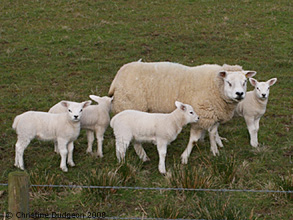Pros v Cons Of A Tight Lambing
23 August 2017 Two unusual points with this year’s lambing were –
Two unusual points with this year’s lambing were –
- Great weather!
- A much larger proportion of the flock lambing in the first 2 – 3 weeks.
Many had nearly 90% of the flock lambed in 3 weeks. One producer who used teasers, lambed half of his 1,200 flock in just 3 days!
Advantages Of Having A Short, Tight Lambing Period
- Efficient, targeted use of labour, reducing losses.
- Better timing for routine ewe vaccinations e.g. pre lambing clostridial vaccinations (should be 4 – 6 weeks pre lambing).
- Shorter lambing minimises build up of disease.
- Fewer days at risk of bad weather for turning out lambs.
- Cross fostering easier.
- An older average age of lambs at weaning etc making management options eg vaccination more efficient.
- The combination of improved lamb survival and an older average age at weaning significantly increases weight of lamb weaned per ewe.
- Bigger, more uniform groups of lambs to sell finished or store.
- Fewer tail enders.
- Older average age for tupping homebred ewe hoggs.
- When lambing hoggs, use of a teaser could allow lambs to be weaned earlier, giving the mother more time to recover and grow before going back to the tup.
- Less pre-lambing feed used, as more ewes lamb early.
Disadvantages
- Higher proportion of miss-mothering (dependant of stocking density).
- Increased lamb losses should bad weather coincide with the peak of lambing. (However as lambing continues for longer the risk period of bad weather for newborn lambs lasts longer.)
- A requirement for skilled staff from the start, no time for training of cheaper labour e.g. students.
- More individual pens, buckets needed.
Effect Of Flock Size
For small flocks the advantages greatly outweigh the disadvantages. However in large flocks (over 1,000 ewes?) disadvantages become more significant. For example a potential peak lambing rate of 8% of the flock per day would require 160 individual pens for a flock of 2,000 ewes. Building in a safeguard against bad weather to keep ewes and lambs in for 2 days would increase this to over 300 pens. This is one reason why the majority of very large flocks are based on lambing at grass utilising easy lambing genetics.
Basil Lowman, basil.lowman@sac.co.uk
Sign up to the FAS newsletter
Receive updates on news, events and publications from Scotland’s Farm Advisory Service
